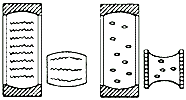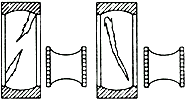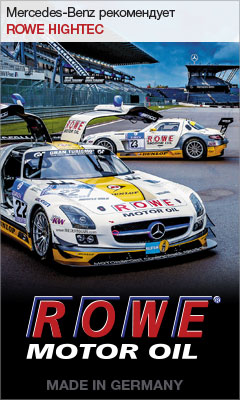
For clients / Typical bearings’ breaks and their causes
| TYPICAL BEARINGS’ BREAKS AND THEIR CAUSES | |
|---|---|
|
Fatigue surface failure connected with lubricant problems, such as unsuitable lubricant, its low ductility and disruption lubricant layer. At the initial stage of the defect’s development the surface looks like frosty on some places, as shown in the picture. While further development of the defect the surface of the raceway begins to flake and crack (it’s necessary to mention, that this flack is not so serious as chips on the raceway). While accumulation of the fatigue at the raceway material its surface becomes coarse, the bearing begins to make a noise and excessively warm. The constant overload, poorly treated and contaminated surfaces inevitably cause the fatigue effects. You can avoid or essentially retard it, if the bearing is clean and well lubricated. |
 Fatigue of the raceway. The surface flakes and cracks. |
|
The surface chipping looks like the surface fatigue, but differs for its more acute degree of the bearing damage and may indicate that the bearing exhaust fatigue resource. It is shown in the picture, that cracking and chips of the surfaces are characterized with deep splits and lamination. This occurs, when under surface splits, appearing in the places of non-metal elements dislocation in the steel of the bearing, come up to the surface. Premature cracking is often caused by bad axle fitting, frame distortion and wrong installation that are conditions, causing too acute cyclic tension. |
 The surface chipping. Deep splits and lamination. |
|
Abrasive tear: Abrasive attrition of metal, shown in the picture, destroys the surface of the bearing elements. According to the type of the abrasive tear, the surface acquires dim grey metal color or is polished like a mirror. Shallow abrasive dust is usual reason of such break; this dust may ingress into the bearing while installation through bad contractions or with foul lubricant. That is why while installation of the bearing it is recommended to wipe each element with clean fabric before lubricating and keep the working surfaces in cleanliness. Good contractions, washed contractions and pure lubricating materials may help to prevent contamination after installation of the bearing. |
 Abrasive tear. The surface damage of the rolling elements. |
|
Cleaving, breaking of details: The reason is great overload of the bearing. The typical example of such cleaving is showed in the picture. As is obvious while looking the picture, the area of the fatigue chipping on the internal cup wraps the entire cup’s beam and the separator is broken to the beats because of cross splits in each bead jack. |
 Cleaving. |
|
Atmosphere corrosion: Corrosion is caused by moisture, which ingress into the bearing from the atmosphere. Moist air hitting into the bearing while cooling of the environment condenses, disrupting the lubricating layer at places where the solids of revolution and raceways contact. Atmosphere corrosion showed in the picture may be prevented when using a good oil seal, consistent lubrication and well greasing the bearing. In some cases special contractions may be necessary to avoid lubrication splashing. It is necessary to fill the bearing with lubricant while every more or long car stoppage. |
 Atmosphere corrosion. Corrosion appearance. |
|
Fretting: As it is shown in the picture, fretting looks like the usual corrosion. It occurs on mounting surfaces of the bearing to the axle, and also on other conjugated surfaces. It is caused by insignificant (microscopic) load. Fractions arising in the result of wearing are of black color in the absence of air and red in its presence. Fretting may cause extinction of fitting of the internal cup on the axle; and also its jamming, in this case it is impossible to withdraw it. Fretting may also cause the breaking of the cup. You may prevent this by following the producer’s recommendations according limits and making sure, that the elements are adjusted in the best way. |
 Fretting on the outer side of the external cup. |
|
Brinneliring: While brinneliring on the cups’ surface regularly following one after another grooves occurs. It is the consequence of the plastic deformation of metal where grooves are, which occur in the consequence of metal overload. The result of raceway brinneliring is shown in the picture. The brinneliring is the consequence of great static or impact loads, wrong technology of bearing installation, great mechanic hits arising while car falling. The brinneliring may be prevented by using only pressing instead of hitting while bearing installation. If it is impossible to prevent impact load while installation and exploitation process, then it is necessary to use bearing suitable for greater loads. |
 Race way brinneliring. Regular grooves on the raceways. |
|
Pseudobrinneliring: as usual brinneliring is characterized by grooves on the raceways. But in contrast to usual brinneliring the grooves are characterized by not only metal depression in plastic deformations zones, but also by its shift, as a result of this the damaged places are not seen even while careful checkup. The result of pseudobrinneliring is shown in the picture. Pseudobrinneliring is the result of great car vibration at nonworking state. Also vibration of other close situated cars influences this. Such problem may be avoided by securing right fastening of the transported axles to bearings and isolating the car of other vibrating devices using for this separate foundation. |
 Pseudobrinneliring. Grooves on the raceways at the expense of metal shift. |
|
Electro damage. As a result of electro welding punctual pitting (welding) often has regular character on the surfaces of rolling elements and raceway. It occurs in the result of electric current passing through the bearing. The bearing raceways are shown in the picture. Electric current may also cause casual chipping. The most usual reasons of electro damage are static electricity, produced by transporter belts and by current of welding apparatus. That is why the transporters are to be provided with ground tapes and welding equipment is to be grounded. |
 Electro damage. Pitting of raceway surface because of great current passing. Grooves on the working surfaces of concave roller, caused by electro current. |
|
Rubbing: rubbing arise from moving of metal from one surface to another. Rubbing as it shown in the picture are caused by slipping because of bearing overload and poor lubricant. Rubbing on the ends of cylindrical rollers may arise from off-design axial load to the bearing. Also it may be a consequence of incorrect assembling of the bearing or poor lubrication. |
 Rubbing on the solids of revolution and raceways because of poor lubricating. |
|
Grinding on the surface: are consequences of abrasive tear and appear as deep scratches on the solids of revolution and raceways. General appearance of greatly tattered surface is shown in the picture. Some fins of the surface create stress concentration places where fatigue failures may occur. Fins on the surface are caused by relatively big particles of material, which hit into the bearing and move on the raceways while solid of revolution moves. Like other problems connected with contamination fins on the surface may be prevented by using good contractions and pure lubricant for the bearing. |
 Fins on the surface of solid of revolution and raceways in the form of deep scratches. |
|
Dents on the surface: example is shown in the picture. This kind of damage looks like brinneliring as dents are usually consequences of plastic deformation but not tear. Never the less they arise while damaging the surface (scratches, abrasion by small foreign particles which are the result of tear or hit into the bearing during its working. Solids of revolution while rotation catch foreign particles hitting into the bearing. This particles hitting on the raceway leave casual notches and in these places stress concentration and lubricant layer disruption that causes fatigue chipping of metal and dents arising. Possibility of dents arising reduces if using good contractions and frequent bearing lubricating which washes out different foreign particles. |
 Dents, deep scratches caused by hitting of foreign particles into the bearing. |
|
Damage while assembling: One of such damages is shown in the picture. At this example the external cup was installed incorrectly and when the bearing was assembled the rollers made depressions on the raceways. |
 Damage of the bearing while assembling because of insufficient experience in assembling. |
|
Overheating: In the picture an example of bearing overheating (its geometry changing) in the result of overheating and load is presented. Usually such damage is connected with the total breaks of the bearing. Overheating is often conditioned by poor lubrication, rubbing of the external cup upon the torsion shaft, excessive swaging of the external cup while installation into the car body or off-design (high) frequency of axle rotating. In some cases the bearing overheating may be conditioned by outer source such as thermal bench. |
 Decoloration and damage of metal caused by poor lubricant and overheating. |
|
Cups misalignment: The main reason on bearing damage shown in the picture is cups misalignment which caused fretting and chipping. Misalignment leads to high axial load causing fatigue failures and great chips of the surface. |
 Bearings damage because of cups misalignment: a) misalignment of the external cup relatively the axle; á) misalignment of the axle relatively the bearings frame. |
|
Damage because of misbalance: Misbalance of the rotor gives the main load to the bearing. If misbalance is too great damage of the bearing has appearance shown in the picture. Sometimes such damage you may find only in one place on the internal cup. To minimize misbalance it is necessary to balance of separate parts of the rotor with maximum possible accuracy especially while working at high speed. |
 Damage because of excessive misbalance of the rotor. |
|
Separator damage: Separator damage such as one shown in the picture develops in formation of splits in it and its destruction. This for its part leads to quick death of the separator in the whole while the fact that the firs reason was separator is not mentioned. More often the reason of the separator death is its curveting appearing while beads moving along mutually crossing ways because of misalignment. Also the separator damage may be caused by incorrect assembling, contamination or rare lubricating of the bearing. |
 Separator damage. |

















